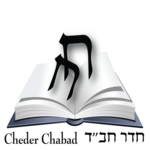The name of the Parshah, "Vayakhel," means "And he gathered" and it is found in Exodus 35:1.
Moses assembles the people of Israel and reiterates to them the commandment to observe the Shabbat. He then conveys G‑d’s instructions regarding the making of the Mishkan (Tabernacle). The people donate the required materials in abundance, bringing gold, silver and copper; blue-, purple- and red-dyed wool; goat hair, spun linen, animal skins, wood, olive oil, herbs and precious stones. Moses has to tell them to stop giving.
A team of wise-hearted artisans make the Mishkan and its furnishings (as detailed in the previous Torah readings of Terumah, Tetzaveh and Ki Tisa): three layers of roof coverings; 48 gold-plated wall panels, and 100 silver foundation sockets; the parochet (veil) that separates between the Sanctuary’s two chambers, and the masach (screen) that fronts it; the ark, and its cover with the cherubim; the table and its showbread; the seven-branched menorah with its specially prepared oil; the golden altar and the incense burned on it; the anointing oil; the outdoor altar for burnt offerings and all its implements; the hangings, posts and foundation sockets for the courtyard; and the basin and its pedestal, made out of copper mirrors.
Learn: Vayakhel in Depth
Browse: Vayakhel Parshah Columnists
Prep: Devar Torah Q&A for Vayakhel
Read: Haftarah in a Nutshell
Play: Vayakhel Parshah Quiz






Join the Discussion